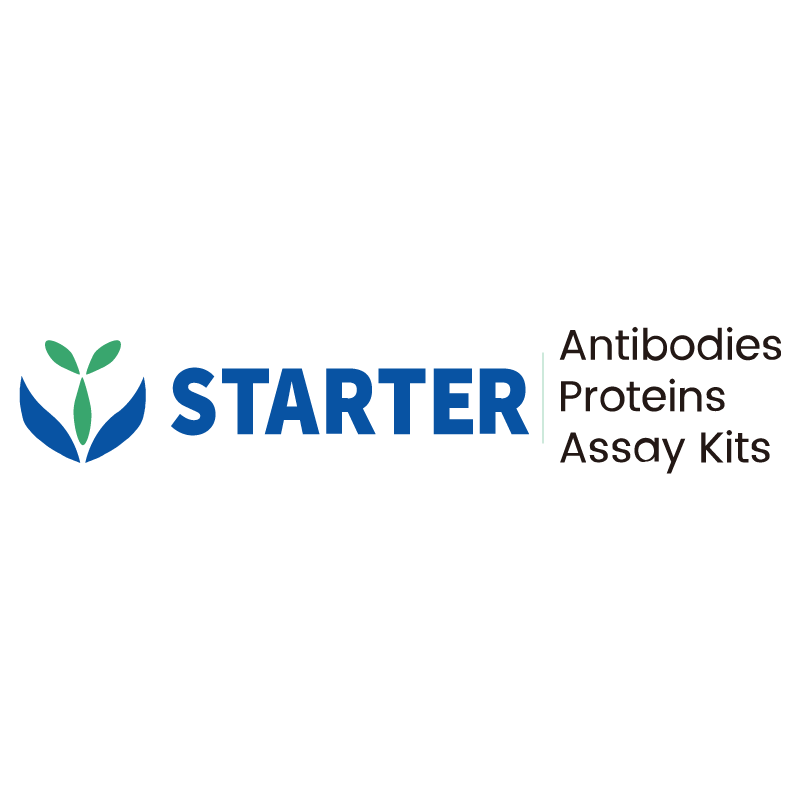WB result of PYCR1 Rabbit pAb
Primary antibody: PYCR1 Rabbit pAb at 1/1000 dilution
Lane 1: HeLa whole cell lysate 20 µg
Lane 2: HepG2 whole cell lysate 20 µg
Lane 3: PANC-1 whole cell lysate 20 µg
Lane 4: A549 whole cell lysate 20 µg
Secondary antibody: Goat Anti-rabbit IgG, (H+L), HRP conjugated at 1/10000 dilution
Predicted MW: 33 kDa
Observed MW: 31 kDa
Product Details
Product Details
Product Specification
| Host | Rabbit |
| Antigen | PYCR1 |
| Synonyms | Pyrroline-5-carboxylate reductase 1, mitochondrial; P5C reductase 1; P5CR 1 |
| Immunogen | Synthetic Peptide |
| Location | Mitochondrion |
| Accession | P32322 |
| Antibody Type | Polyclonal antibody |
| Isotype | IgG |
| Application | WB, IHC-P, ICC |
| Reactivity | Hu |
| Positive Sample | HeLa, HepG2, PANC-1, A549 |
| Purification | Immunogen Affinity |
| Concentration | 0.5 mg/ml |
| Conjugation | Unconjugated |
| Physical Appearance | Liquid |
| Storage Buffer | PBS, 40% Glycerol, 0.05% BSA, 0.03% Proclin 300 |
| Stability & Storage | 12 months from date of receipt / reconstitution, -20 °C as supplied |
Dilution
| application | dilution | species |
| WB | 1:1000 | Hu |
| IHC-P | 1:200 | Hu |
| ICC | 1:500 | Hu |
Background
PYCR1(pyrroline-5-carboxylate reductase 1)is an enzyme encoded by the PYCR1 gene, located on human chromosome 17q25.3. It catalyzes the NAD(P)H-dependent conversion of pyrroline-5-carboxylate to proline, playing a crucial role in proline biosynthesis. PYCR1 is primarily localized in the mitochondria and forms homopolymers. This enzyme may also be involved in the generation of NADP(+) in certain cell types. PYCR1 is broadly expressed in various tissues, including the salivary gland and stomach. It has been implicated in multiple biological processes and diseases. For instance, PYCR1 is overexpressed in many cancers, promoting tumor growth, invasion, and metastasis by supporting proline synthesis and activating various signaling pathways. In addition, it is involved in the regulation of cell proliferation and drug resistance in colorectal cancer through the STAT3-mediated p38 MAPK and NF-κB signaling pathways.
Picture
Picture
Western Blot
Immunohistochemistry
IHC shows positive staining in paraffin-embedded human kidney. Anti-PYCR1 antibody was used at 1/200 dilution, followed by a HRP Polymer for Mouse & Rabbit IgG (ready to use). Counterstained with hematoxylin. Heat mediated antigen retrieval with Tris/EDTA buffer pH9.0 was performed before commencing with IHC staining protocol.
IHC shows positive staining in paraffin-embedded human stomach. Anti-PYCR1 antibody was used at 1/200 dilution, followed by a HRP Polymer for Mouse & Rabbit IgG (ready to use). Counterstained with hematoxylin. Heat mediated antigen retrieval with Tris/EDTA buffer pH9.0 was performed before commencing with IHC staining protocol.
IHC shows positive staining in paraffin-embedded human lung adenocarcinoma. Anti-PYCR1 antibody was used at 1/200 dilution, followed by a HRP Polymer for Mouse & Rabbit IgG (ready to use). Counterstained with hematoxylin. Heat mediated antigen retrieval with Tris/EDTA buffer pH9.0 was performed before commencing with IHC staining protocol.
IHC shows positive staining in paraffin-embedded human lung squamous cell carcinoma. Anti-PYCR1 antibody was used at 1/200 dilution, followed by a HRP Polymer for Mouse & Rabbit IgG (ready to use). Counterstained with hematoxylin. Heat mediated antigen retrieval with Tris/EDTA buffer pH9.0 was performed before commencing with IHC staining protocol.
Immunocytochemistry
ICC shows positive staining in HepG2 cells. Anti-PYCR1 antibody was used at 1/500 dilution (Green) and incubated overnight at 4°C. Goat polyclonal Antibody to Rabbit IgG - H&L (Alexa Fluor® 488) was used as secondary antibody at 1/1000 dilution. The cells were fixed with 100% ice-cold methanol and permeabilized with 0.1% PBS-Triton X-100. Nuclei were counterstained with DAPI (Blue). Counterstain with tubulin (Red).


